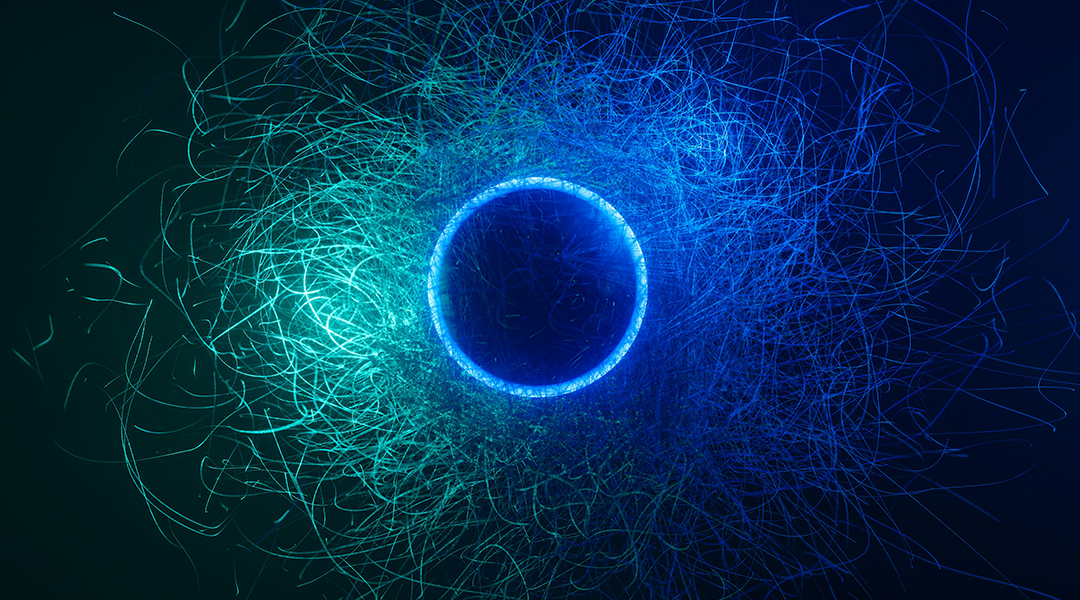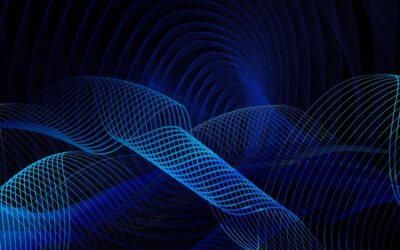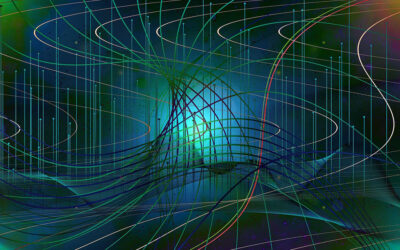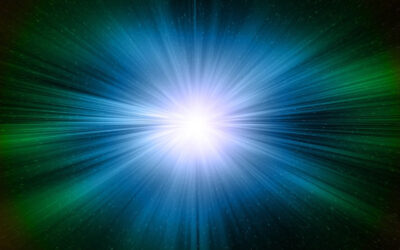A new study offers significant advancements in the understanding of tetraquarks — a rare and complex type of particle.
By developing a new approach that combines advanced mathematical methods with a simpler model of how particles interact, the researchers have made important discoveries about the inner structure and mass of these particles.
Their results align with both experimental data and earlier predictions. What’s more, the team has made their own predictions about tetraquarks that have yet to be observed, and will likely be tested in future experiments at the Large Hadron Collider (LHC) and other particle accelerators.
What are tetraquarks?
Tetraquarks are exotic particles made up of four quarks, which differentiates them from conventional strongly interacting particles known collectively as hadrons. Hadrons are composed of either a quark and an antiquark (known as mesons) or three quarks (called baryons).
Tetraquarks, on the other hand, are much more complex, consisting of combinations of four quarks or antiquarks. Because they are much less understood than other particles, both in experiments and theory, gaining a better understanding of them is especially important for advancing our knowledge of particle physics.
The first tetraquark to be discovered experimentally was the Zc(3900), observed in 2013 by two independent experiments — the BESIII experiment in China and the Belle experiment in Japan. This particle is made up of a charm quark (c), an anti-charm quark (c), an up quark (u), and an anti-down quark (d). The discovery of the Zc(3900) confirmed earlier theoretical predictions about the existence of such particles, sparking a surge of experimental investigations and leading to the discovery of several other tetraquarks with varying quark contents.
While the discovery of tetraquarks has generated significant interest, understanding their true nature remains a challenge. Quantum chromodynamics, the theory that describes how quarks and gluons interact, is notoriously complex. Due to this, accurately predicting the properties of tetraquarks directly from this theory has proven difficult, which has led them to develop various approximate models that must be validated with experimental data.
Probing the tetraquark structure
In a recent study published in Physical Review D, a team of researchers from China and Germany have simplified the computations required to determine the structure and properties of tetraquarks by ignoring the constant creation and annihilation of virtual particles in the vacuum.
This effect, which occurs at subatomic scales and can influence the behavior of particles, makes calculations much more complex. By excluding this factor, the researchers were able to focus on the direct interactions between quarks and gluons, simplifying the model and making it more manageable. While this approach sacrifices some precision, it allows for valuable predictions that can be tested through experimental data.
Subheading
The researchers employed this framework to investigate doubly heavy tetraquarks with open flavor — a term referring to quark species, such as “up,” “down,” “charm,” or “bottom,” that are not paired with their corresponding antiquarks. These tetraquarks, composed of two heavy quarks (either charm or bottom), were recently discovered experimentally. Despite this breakthrough, their properties and internal structure remain poorly understood, making them a compelling subject for further theoretical exploration.
“Three years ago, the LHCb experiment reported the first doubly heavy tetraquark with open flavor named Tcc(3875)+,” said Shi-Lin Zhu, a professor of physics at Peking University and one of the authors of the study,in email. “This discovery is both significant and intriguing, as previously, only one other doubly heavy state with open flavor, the conventional baryon Ξcc, had been observed. The new state, being a tetraquark, represents an entirely different structure and is particularly exciting.”
Using their approach, the team examined multiple tetraquarks composed of two heavy quarks (either c or b) and two light antiquarks (either u, d, or s). They computed the masses, sizes, and determined how the four quarks are distributed within these exotic hadrons.
In particular, they calculated the mass of the Tcc(3875)+, which consists of two c-quarks, one anti-d and one anti-u. Their result closely matched the experimentally measured value. Additionally, they determined the internal structure of the particle, finding that it resembles a molecule made up of two loosely bound mesons, each consisting of one charm quark and one light antiquark, in line with experimental data.
“Generally, the tetraquark states are classified into meson molecules and compact tetraquark states. These two different configurations reveal different internal structures and binding mechanisms of these exotic states,” Zhu explained. “Moreover, the compact tetraquark states have three types of interesting spatial configurations. The so-called ‘compact even tetraquark’ is an analog of the hydrogen molecule. The ‘compact diquark-centered tetraquark’ is an analog of the helium atom.”
Such a variety of structures arises from the larger number of quarks in tetraquarks compared to mesons and baryons, enabling a deeper exploration of the subtle properties of strong interactions. This diversity offers valuable insight into the complexities of the strong force and allows researchers to probe its behavior in more detail.
Future predictions
Most of the tetraquarks analyzed in the study have yet to be discovered experimentally, but the researchers are optimistic about the near future. They believe that advances in experimental technology will enable the detection of these predicted particles, allowing for further testing and validation of their model.
“We predicted the existence of the Tbc and Tbb states, which are the cousins of the doubly charmed tetraquark state Tcc(3875)+ discovered by LHCb collaboration in 2021, but with one or two of its c-quarks substituted by b-quarks,” said Zhu. “These particles are likely to be observed by the LHCb experiment at the Large Hadron Collider. Since July 2022, RUN 3 — a new data-taking period at the LHC — has begun and will continue for four years. With significant upgrades, the data-taking rate of the LHCb experiment is expected to increase tenfold. This enhanced capability will greatly facilitate the potential discovery of the Tbb and Tbc tetraquark states.”
Beyond tetraquarks, the scientists are confident that their theoretical framework can be applied to even more exotic particles composed of five or six quarks. This could open new frontiers in our understanding of strongly interacting particles and the fundamental forces at play.
“The present theoretical framework can be extended to various multiquark systems. In fact, we have applied them to two other tetraquark systems and successfully describe the experimentally observed states Tcs(2870)*, X(6900) and X(7200) within a unified framework,” concluded Zhu. “In the future, we will apply the framework to investigate pentaquark systems, which consist of five quarks, and even hexaquark systems, which consist of six quarks. We hope our theoretical investigations can help promote experimental discoveries and understand the nature of multiquark states.”
Reference: Wei-Lin Wu, Yao Ma, Yan-Ke Chen, Lu Meng, and Shi-Lin Zhu, Doubly heavy tetraquark bound and resonant states, Physical Review D (2024). DOI: 10.1103/PhysRevD.110.094041
Feature image credit: Dynamic Wang on Unsplash

















